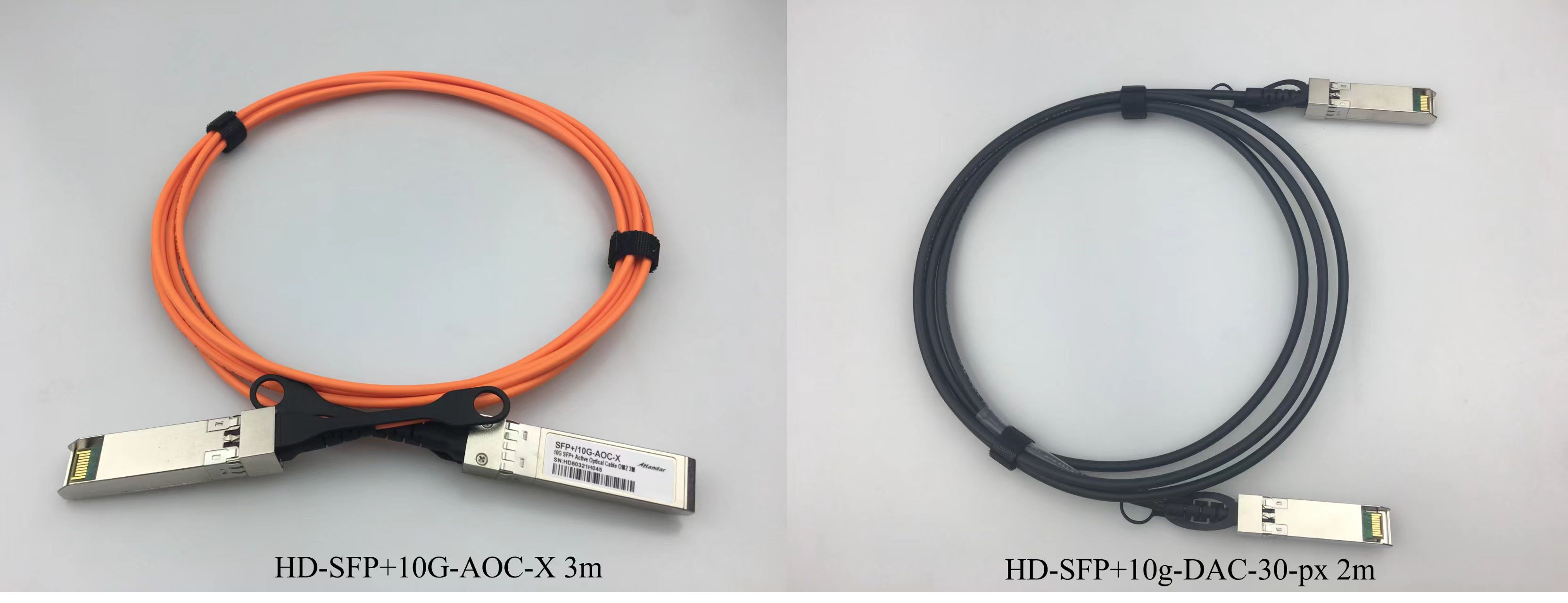How are optical modules classified?
2022-05-06(1423)views
As an optical device to complete photoelectric conversion, module is essential in optical communication network. See Gigabit / gigabit optical module, SFP / SFP + / qsfp28 optical module and so on. Do you know how these optical modules are classified? What other types? Next, I will describe in detail how optical modules are classified and why they are classified.
How to classify optical modules and their types?
In order to meet different application requirements, optical modules with different parameters and functions appear. The classification methods and types of optical modules are as follows:
Packaging form
According to the packaging form, the optical module is divided into SFP/SFP+/SFP28/QSFP+/Qsfp28 and QSFP-DD.
SFP optical module is an upgraded version of GBIC, with a maximum speed of 4.25g. It is mainly composed of lasers and has the characteristics of small size and hot plug.
SFP + optical module is an enhanced version of SFP, with a transmission rate of 10Gbps, which can meet the applications of 8.5g fiber channel and 10G Ethernet.
The transmission rate of sfp28 optical module is 25gbps, with low power consumption and high port density. It supports hot plug.
The transmission rate of qsfp + optical module is 40Gbps. It supports MPO optical fiber connector and LC optical fiber connector. It has the characteristics of small size and hot plug.
Qsfp28 optical module adopts four 25gbit / s channels for parallel transmission, and the transmission rate is 100gbps, which meets the application of 100g Ethernet.
The speed of qsfp-dd optical module is 200gbps and 400gbps, which are 8 25gbit / s channels and 8 50gbit / s channels respectively.
transmission speed
The transmission rate of optical module refers to the number of bits (bits) of data transmitted per second. The units are MB / s and GB / s. The transmission rate usually ranges from 100MB / s to 400gb / s. The common transmission rates are 1GB / s.10gb/s.25gb/s.40gb/s.10gb/s and 400gb/s. The optical module can be divided into 1g optical module (i.e. gigabit optical module), 10G Optical module (i.e. 10G Optical module), 25 optical module, 40g optical module, 100g optical module and 400g optical module.
transmission distance
According to the transmission distance, the optical module can be divided into short distance, medium distance and long distance. The transmission distance from the short-distance optical module is less than 2km, the transmission distance from the medium-distance optical module is between 10 ~ 20km, and the transmission distance from the long-distance optical module is more than 30km.
transmission mode
According to the supported data transmission mode, the optical module can be divided into simplex optical module, half duplex optical module and full duplex optical module. Simplex optical module only supports data transmission in the same direction. For example, a television station can send a signal to the audience, but the audience cannot send a signal to the television station; The half duplex optical module supports data transmission in two directions, but does not support data transmission in both directions at the same time. For example, walkie talkies can support mutual calls, but do not support simultaneous calls; The full duplex optical module supports data transmission in both directions at the same time. For example, mobile phones can support simultaneous calls.
Central wavelength
The working wavelength of optical module is a range, but we usually use the central wavelength instead of the working wavelength to describe it. The optical module can be divided into ordinary optical module and color optical module according to the central wavelength. The central wavelength of ordinary optical module is 850nm 1310nm and 1550nm, while the central wavelength of the color optical module is CWDM wavelength and DWDM wavelength, in which the CWDM wavelength range is 1270 ~ 1610nm and the DWDM wavelength range is 1525 ~ 1565nm or 1570 ~ 1610nm.
Fiber type
According to the applicable fiber type, the optical module can be divided into single-mode optical module and multi-mode optical module, in which single-mode and multi-mode refer to the transmission mode of optical fiber in the optical module. Single mode optical modules are mainly used for remote transmission, and multi-mode optical modules are mostly used for short-distance transmission.
Interface type
Optical module interfaces include optical fiber interface and RJ45 interface. Optical fiber interface is generally used to connect with LC Optical fiber jumper for MTP / MPO and other connectors. The optical module with this interface is usually called optical port module; As the name suggests, RJ45 interface is used to connect network cables. We usually call the optical module with this interface as the electrical interface module. In short, the main difference between the electric port module and the optical port module lies in the difference of transmission medium. The electric port module transmits electrical signals and the optical port module transmits optical signals.
working temperature
According to different working temperatures, optical modules are mainly divided into commercial optical modules and industrial optical modules. The working temperature of commercial optical modules is between 0 ℃ and 70 ℃, and that of industrial optical modules is between - 40 ℃ and 85 ℃.
manufacturer
According to different optical module manufacturers, optical modules can be divided into original optical modules or compatible optical modules. Original optical module refers to the optical module manufactured by the original equipment manufacturer, such as Cisco, Huawei, Huasan and other brand optical modules. Compared with compatible optical modules, the price is more expensive. Compatible optical module refers to the optical module manufactured by a third-party manufacturer, which can be applied to Cisco, Huawei, Huasan and other original equipment. The cost is lower than the original optical module and provides lifelong warranty service, but the disadvantage is that the quality is uneven.
application area
The optical module can be divided into SDH optical module, fibre channel optical module, Ethernet optical module and digital video optical module.
SDH optical modules are mainly used in SDH / SONET networks, such as common Gigabit SFP optical modules, 10 Gigabit SFP + optical modules, etc.
The fibre channel optical module is mainly used for the fibre channel storage network link of the data center. It has the characteristics of miniaturization, low power consumption, hot plug and so on. It can meet the needs of fast transmission of a large amount of information.
Ethernet optical module is mainly used for LAN, such as ordinary optical module, WDM optical module, bidi optical module, etc.
The digital video optical module is mainly used for the transmission of PDH optical transceiver and HD video. It has the characteristics of small size and hot plug.
Latest News
-

Spring Festival Holiday Notice
Dear Valued Customers and Partners,As the Spring Festival ap...
-

What is Sora, and what new impact will it have on the intelligence field?
Sora AI, a groundbreaking system, revolutionizes video creat...
-

Whandar 2024 Spring Festival Holiday Notice
SFP supplier in Shenzhen
-

Understanding the Differences between AOC and DAC Cables
We aremanufacturers of optical module,fiber optic transceive...
0755-86654236
Phone:0755-86654236
Telephone:
Fax:0755-86654231-869
Email:[email protected]
Address:4th Floor, Building 4, Xusheng Xifa B Industrial Zone, Yintian Gonghe Industrial Road, Xixiang Town, Baoan District, Shenzhen



 0755-86654236
0755-86654236